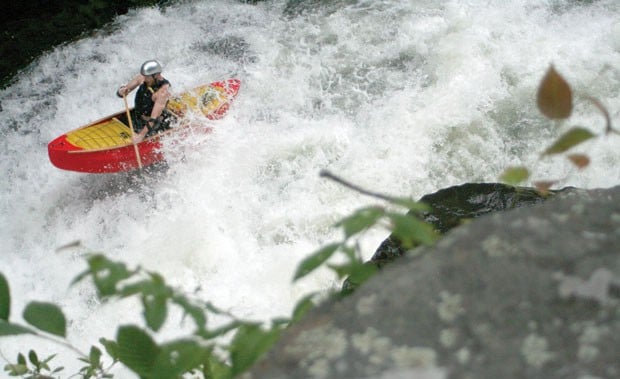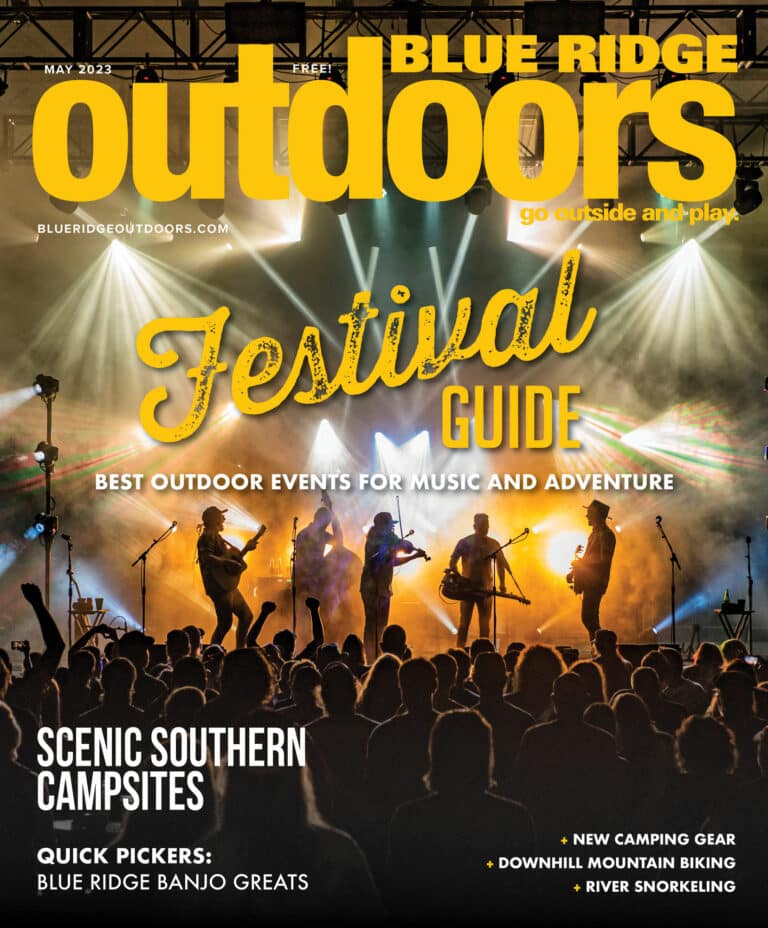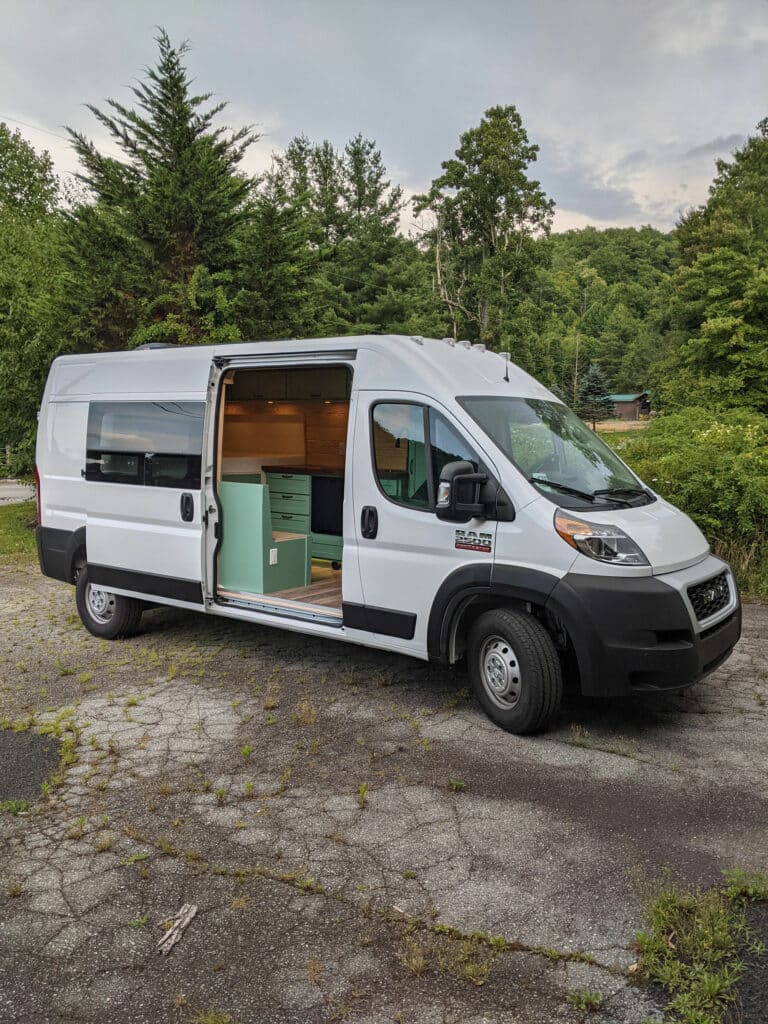Photo: Hunter Davis
Dooley Tombras was kneeling in his boat at the top of Triple Falls last spring when he became convinced he was going to paddle off the edge of the earth. Triple Falls is a three-tiered waterfall that drops 125 feet inside North Carolina’s Dupont State Forest. Occasionally, a brazen kayaker runs the falls, but nobody had ever done what Tombras was about to attempt. The 29-year old Knoxville paddler was about to bag the first descent of Triple Falls in a whitewater canoe.
“It’s really intimidating to be in a boat at the top of a set of massive waterfalls,” Tombras says. “I’ve never had that perspective before, where it looks like the world just ends. The tourists standing there were looking at me like I was crazy.”
It was just another day of work for Tombras, star of Canoe Movie 2: Uncharted Waters, the second whitewater canoe film produced by paddling collective Amongstit (the same group that puts together the popular Lunch Video Magazine). The movie follows Tombras and other whitewater canoeists as they systematically knock out first canoe descents of burly creeks and waterfalls all over North America and Mexico.
Whitewater canoeing was relatively popular until the early 2000s when kayaks evolved into smaller, lighter, and more stable boats, which allowed paddlers to run more advanced water. Whitewater canoe design didn’t progress as quickly. Open boats were markedly slower and less maneuverable than kayaks. Whitewater canoes nearly became relics of a bygone era.
“Suddenly, it was much easier to run hard whitewater in a kayak, so everyone abandoned their canoes,” says Tombras, who’s been paddling whitewater in a canoe since the mid 90s. “People were fleeing the sport. All I ever heard were stories about people ditching their open boats.”
Luckily for Tombras and other die-hard open boaters, the paradigm shifted again two years ago, when Canadian canoe manufacturer Esquif developed the L’Edge, a shorter, more stable canoe with a radical rocker that allows a skilled canoeist to run hard whitewater almost as easily as a kayaker.
With the original Canoe Movie, which was released in 2010, the Amongstit crew wanted to introduce the world to whitewater canoeing, detailing its history and some of the key players in the niche sport. With Canoe Movie 2, Hunter Davis, one of the owners of Amongstit, hopes to show the world exactly what can be done in an open boat.
“Anything you can do in a kayak, these guys can do in a canoe. You can run class V. You can run waterfalls,” Davis says. “With Canoe Movie 2, we want to blow the doors off of adventure canoeing. We want to show them running these huge drops, and show that they’re not just daredevils throwing themselves off of waterfalls. They’re making big, beautiful moves just like a kayaker.”
In the process of filming Canoe Movie 2, Tombras and his cohorts have notched out first descents all over North America, including 40-foot waterfalls in Mexico and wilderness runs in the Carolinas’ Jocassee Gorge. One of the most impressive first descents has to be Road Prong in Great Smoky Mountains National Park. It’s a skinny tributary of West Prong that’s accessed from the Chimney’s parking lot. It’s only runnable after a massive rain, and by all accounts, it’s the steepest river ever run in a canoe. The Road Prong drops 750 feet per mile with no necessary portages. By comparison, the Green River, arguably the most famous steep creek in the country, drops only 300 feet per mile.
“It was scary,” Tombras says. “To be honest, I only ran it because the film was rolling.”
While the new boats are more maneuverable on the water than the older models, they’re no lighter. Esquif’s L’Edge comes in at 70 pounds, and canoeists often have to carry on their shoulders for long hikes if they want to bag the more remote rivers in the region. For the Road Prong descent, Tombras had to lug his boat up a hiking trail that gained 1,000 feet in elevation before he could dip his paddle in the water.
Beyond the added weight, there are still some performance limitations to open boating. Canoeists still only have one paddle and they still have a big hole in the top of their boat, so they’re always going to take on water. It’s a trade off, according to Tombras, who never once considered abandoning his canoe for a kayak.
“I like the added challenge and the aesthetic value of running a river in a canoe,” Tombras says. “It’s like telemark skiing or fly fishing. Yes, it’s harder, but that’s part of the beauty.”
More paddlers are drawn to the aesthetics of canoeing now that the boat designs have caught up to kayaks. Canoeists are now able to style big drops and tight creeks as well as most kayakers, pushing the limits of what people thought was possible in an open boat. More often than not, those limits are being pushed right here in the Southeast.
“There are small pockets of open boaters all over, but the Southern Appalachians are a mecca,” Davis says. “The guys who are pushing the sport are doing it right here in our backyard.”
The majority of Canoe Movie 2’s footage was shot on Southern creeks, and it wasn’t just a matter of convenience. According to Tombras, Southeastern rivers are ideal for open boating.
“It’s the geology. We have drop and pool rivers, where you can run a big waterfall, then recover in an eddy and dump the water out of your boat before moving on to the next big drop,” Tombras says. “In the Rockies, though, the whitewater is more continuous, so if you’re in an open boat, you could easily get beat down for a mile of nonstop whitewater.”
As for Davis, he’s excited about being able to show off some of our local rivers in a cutting-edge film like Canoe Movie 2.
“You see a lot of adventure films set in places I’ll never get to go,” Davis says. “New Zealand looks amazing, but I’ll probably never get to paddle there. But I know I can get to the West Prong, which looks just as amazing, and I’ve never seen a film like this set there until now.”
Video Bonus: See a teaser of Canoe Movie 2: Uncharted Waters:








